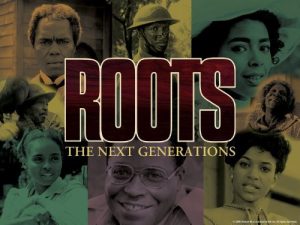Imagine running across a field. You’re tired and out of breath. You’ve been in what seems like an endless game. From sun up to sundown you’re running and fighting to make a goal. To some, it may seem like a game, but not to you. To you, it’s part of your culture, your religion, and, to you, the outcome matters.
Lacrosse was first played by Native American tribes in different regions of North America. There were many different versions of the game, rules, numbers of players, and sizes of the fields that would change depending on the tribe. Names of the game also varied, and included Creators’ Game, Baggataway, and Tewaaraton, which translates to “little brother of war.”1

The name that we know today as lacrosse came about in 1636 when French Missionary Jean de Brebeuf compared the shape of the sticks used by players of the game to a bishop’s crozier, which is ‘‘crosse’’ in French.2
For many Native American tribes, lacrosse wasn’t just a sport, but rather part of their culture and their religion. Since the game was very rough and people could be injured and even die while playing, the Iroquois used lacrosse as a way of training young men to be warriors, and the game was used to settle disputes without actually going to war. This is why lacrosse is nicknamed “little brother of war.”3 Lacrosse also had religious significance among some tribes. It was called the Creator’s Game, and it helped the players put their lives into perspective and teach lessons, some of the most valuable lessons being that everyone has struggles and opponents and the key to survival is friends and allies.
In the culture of the Iroquois, when a man dies, his lacrosse stick is buried with him. They believed that the first thing he would do when he wakes up in the afterlife is to take the stick from his coffin and begin playing that day.4

Native American lacrosse was often played on a stretch of land up to two miles long with sticks between 3-5 feet long made of wood and animal skin. A game could include between one-hundred to one-thousand players at a time. There was no set time to the games. The two teams would agree on a set amount of points and would play from sunrise to sunset until the amount of points was achieved.5 Violence and injuries were very common, and players would often walk away with minor cuts, broken bones, head injuries, and occasionally a death would occur.
Few people can claim to have experienced a Native American game of Lacrosse. Artist George Catlin had a passion for learning about Native Americans, and how they lived. He once said that “If my life is spared, nothing shall stop me short of visiting every nation of Indians on the Continent of North America.” He attended a major Choctaw lacrosse game in 1834. In his time there, he recorded everything that he saw and described how the game was set up from the length of the field and deciding where the goals would be places, to how each team was set up. He described how the night before the match both teams danced and chanted all night. Each team had a medicine man who chanted incantations to strengthen their team and weaken the other. He recorded his experiences through paintings and writings.6
Lacrosse is a sport that has a beautiful history and carries a meaning that many of us will never be able to understand. To Native Americans, lacrosse was a sport, a teaching tool, a religion, and a way to connect their cultures with other tribes.7 Today the history and meaning behind lacrosse has been lost, and to many it has become just another sport played for recreation and friendly competition.
- The Gale Encyclopedia of Fitness, 2012, s.v. ‘”Lacrosse,” by David E. Newton. ↵
- Salem Press Encyclopedia, 2017, s.v., “Lacrosse,” by Justin D. Garcia. ↵
- Thomas Vennum Jr., “American Indian Lacrosse: Little Brother of War,” The Journal of American Folklore 108, No. 427 (1995): 98-99. ↵
- S. L. Price, “Pride of a Nation,” Sports Illustrated 113, no. 2 (2010): 60-71. ↵
- Stanley A. Freed, “Lacrosse yesterday and today,” Cobblestone 15, no.9 (1994): 32. ↵
- Joanna Shaw-Eagle, “Catlin saves vanishing Indians on canvas,” The Washington Times, January 4, 2003. ↵
- John Seabrook, “Gathering of the Tribes,” New Yorker 74, No. 26, (August 1998): 30. ↵



154 comments
Alia Hernandez Daraiseh
Zeresh Haman incorporated a strong imagery hook in the beginning of his article, which grabs the readers attention right off the bat. He highlights important information- like the different ways each tribe perceived Lacrosse, and the importance it has to their heritage. The images Haman provided were key to really showing what Lacrosse had looked like back then. Additionally, Human provided another image describing what the Native Americans had worn to play.
Velma Castellanos
I find it interesting how lacrosse was a sport played for Native Americans and how it was part of their culture. I like your use of images because it shows how invested these Native Americans are in the game. I also enjoyed the pace your article is and that I could understand what you were writing. I also have to agree that lacrosse is a beautiful sport because lacrosse is one of the things I grew up around.
Aaron Onofre
It’s crazy to think that lacrosse was once originally a way of settling disputes or training young men. Lacrosse was way more than just a sport to them it was way of life but now it has become a recreational activity that some play on the occasion. It really shows how we can lose the true culture of things as time goes on.
Marycarmen Sanchez
I didn’t think about the origins of games like lacrosse, and I definitely didn’t expect that this game was another form of war. I liked the images included in this article, it must’ve taken some time to focus on all of the tiny details and expressions that brought them to life. I think that you did a marvelous job writing this article. I liked the beginning and how you gave us a look into the mind of someone playing that version of the game, it really put things into perspective for me. It also helped me compare the modern version to the original version since the original was so significant compared to a simple game. The translations were also interesting to learn about.
Matthew Gallardo
While other articles regarding history were written, this one took it a step further. despite being relatively shorter than many other articles on this website, this article revealed the origins and the meaning of lacrosse to those that played it hundreds of years ago. It didn’t tell the story of an individual, but the culture surrounding the sport, making young men into warriors via Lacrosse, and its significance to the Iroquois and other Native American tribes in North America. Id love to see more articles of this nature
Seth Roen
Honestly, it did not register that lacrosse had a violent history, sometimes referred to as the Little Brother of War in some Native American cultures, using it as a controlled war. Also, I did not know that the French coined the name that we know today. It makes the modern-day game look tame compared to how lacrosse had initially played the game centuries ago.
Margaret Cavazos
The author did a remarkable job in including all the details of the original game of lacrosse, from the cultural context, the equipment, the number of people involved, and even the current form of the game. The artwork included was beautiful, and it is fortunate that an artist happened to be interested in native life and was able to create this depiction of the game that the author of the article then included. Such attention to detail and clear evidence of in-depth research were evident in this article, even including the native names for the game as well as the origin of the French name for the game were equally interesting to read.
Janelle Martinez
Hi Haman your article was honestly so interesting I liked how you talked about the Native American culture and how one of the names of this game was “the little brother war” and when you think about it this game probably settled hundreds of disagreements and this not only saved hundreds of people from dying in massive wars but this game was also a coming of age because when the boys of the tribes came of age they would learn how to fight in this war.
Joseph Chi
Hey Haman, I think that you did an outstanding job in creating this article. I think the way you incorporated other’s personal experiences and did research from many places to compose this helped make it more enjoyable and knowledgeable. The images included also were very drawing in terms of catching my attention, it allowed me to try and make my own visuals and understand just how great these games were or the capacities they could reach.
Joseph D Chi
Hey Haman, I think that you did an outstanding job in creating this article. I think the way you incorporated other’s personal experiences and did research from many places to compose this helped make it more enjoyable and knowledgeable. The images included also were very drawing in terms of catching my attention, it allowed me to try and make my own visuals and understand just how great these games were or the capacities they could reach.